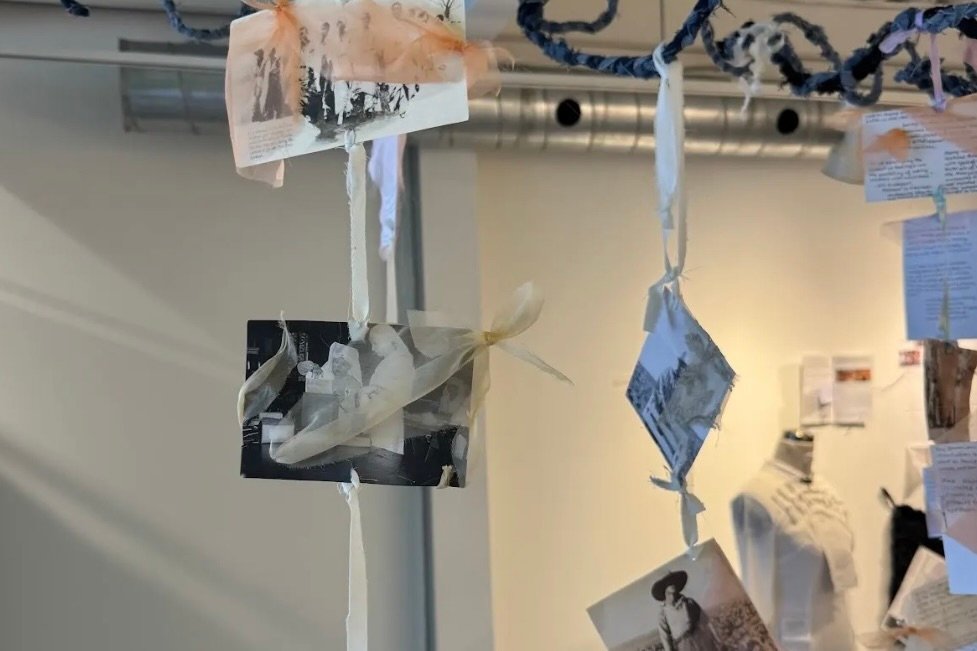
Entering the Unravelling exhibit, audiences are greeted with vibrant colours that connect to the hosting artists’ culture, not only to celebrate Filipino Heritage Month, but also to express the woven connection between culture and identity through textures and diverse media.
Boasting interactive pieces, sculptures, wall art, photos, video, and a multitude of colours and textures, the exhibit ran at Gallery 101 in Centretown this summer.
“We want to share our art with other people in and out of the Filipino community, to connect or reconnect with our heritage,” said hosting artist Maria Patricia Abuel.
The exhibit incorporates interactive works from Toronto-based artists Abuel, Norwin Anne Pabitu and Bianca Isabel Garcia. Each artist has a unique style, but through textiles, the artists found “a way to connect their different art interests,” Garcia said.

To Pabitu, Garcia’s art bridges the artists’ themes.
“Abuel’s approach to textiles is very personal in identity and self, while Garcia touches on this but in a historical context, while I find myself touching on the historical side of the fashion industry,” Pabitu said.
Pabitu’s work features bright-coloured letters set against fabrics, blending the textures together with visuals expressing the waste and consequences of fast fashion from Western colonial powers. Garcia’s work also employs bright colours with pieces that move with the viewer, as she uses historical photos that highlight active past and present colonialism.
“We want to use our art to show all of the different consequences of colonialism through our own perspectives,” Garcia said.
“We want to bring attention to our community through our art,” Abuel added.
For gallery-goer Kate McDonald, the exhibit “allows for the beauty of the art to shine through while also connecting the audience to the messages of the artists.”
“I find myself drawn to the colours and learn from the artists themselves through their work. … The work is important as each piece provides the viewer with a different perspective of colonial oppression.”

The exhibit also featured a traditional altar dedicated to the victims who died at the Vancouver Lapu Lapu Festival, where an SUV drove into the crowd, leaving 11 fatalities and 32 injured on April 26.
Gallery 101 guests could leave offerings at the altar while Lukayo, a spiritual guide, helped teach the inner workings of how spirits behaved within Filipino culture.
Lukayo introduced the audience to the traditions of Filipino spiritual practitioners, welcoming the spirits of those present with a moment of silence and then performing a song in Filipino to connect the audience.
Lukayo asked the audience to thank the spirits after the moment.
“To respect the spirits of this land, one must learn from the teachings of the Indigenous peoples of that space,” Lukayo told the audience, adding that doing so is important when inhabiting a space not initially occupied by the Filipino community.
Kristina Corre, head administrator of Gallery 101, said she believes it is critical to support the artists “at the very beginning of their career.”
“Seeing how their message translates to physical work has been nice,” Corre said. “I think these artists bring attention to the Filipino community, something that is highlighted as June is Filipino Heritage Month.”
“As a member of the Filipino community in Ottawa, I do not feel there is a large art community within that group, and I want to encourage this creation.”
Featured image by Savanah Patterson/the Charlatan











